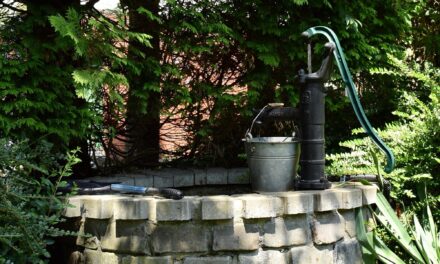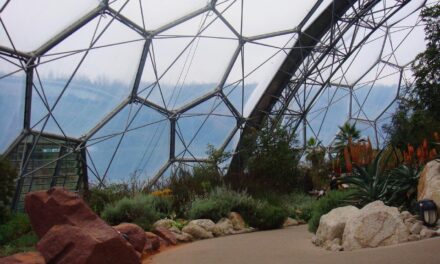Integrated water cycle management strategies in Greater Salt Lake
Integrated water cycle management strategies for Greater Salt Lake
Expository Explanation:
Problem: Declining Water Resources
The shrinking Great Salt Lake poses a significant challenge for several interlinked reasons:
1. Reduced Water Availability for Human Use:
The water resources utilized for domestic consumption, agricultural irrigation, and electricity generation heavily rely on the same sources that feed the Great Salt Lake. As the lake diminishes, so too does the overall water supply available for these essential human needs.
2. Disruption of the Water Cycle:
The Great Salt Lake plays a vital role in the local water cycle:
- Snowfall: Snow accumulating in the surrounding mountains provides a water reserve that gradually melts and replenishes the lake.
- Evaporation: The region’s arid climate and high temperatures cause water from the lake to evaporate, forming water vapor that rises into the atmosphere.
The shrinking lake surface reduces the amount of water available for evaporation, disrupting the natural cycle that replenishes it.
3. Impact on Ecosystem:
The Great Salt Lake supports a diverse ecosystem, including migratory birds, brine flies, and various aquatic species. The lake’s shrinking water levels and increasing salinity can disrupt breeding and feeding habitats, potentially threatening the survival of these species.
The Great Salt Lake: A Sea in Trouble
TL;DR: The Great Salt Lake is shrinking because of a changing climate and how we use water. This harms the lake and the people who rely on it. We need to use water wisely, try new ways to farm, and make smart decisions to help the lake recover.
The Great Salt Lake’s Water Journey
The Great Salt Lake is a giant, salty lake in the heart of Utah. It’s a vital part of the environment, like a giant bathtub that collects water from the mountains and rivers around it. Here’s how the water cycle works for the Great Salt Lake:
- Snowfall: The mountains surrounding the Great Salt Lake get lots of snow in the winter. This snow acts like a giant water storage container.
- Melting Snow: As temperatures warm up in the spring and summer, the snow melts, sending water down rivers and streams that flow into the Great Salt Lake.
- Evaporation: The hot sun and dry air cause water from the Great Salt Lake to evaporate, turning into water vapor and rising into the air. Some of this water vapor turns back into snow and rain, restarting the cycle.
A Shrinking Sea: The Challenges of Water Scarcity
The Great Salt Lake has been shrinking for decades. This is a big problem for several reasons:
- Less Water for People: The water we use in our homes, to water our crops, and to make things like electricity all comes from the same sources as the Great Salt Lake. Less water in the lake means less water for people too.
- Harmful Dust: When the lake shrinks, the dry lakebed turns to dust. This dust can blow into the air and cause health problems for people who live nearby.
- Wildlife in Trouble: Many animals depend on the Great Salt Lake for food and shelter. As the lake shrinks, these animals lose their homes and struggle to survive.
The Impact of Climate Change
Climate change is making the Great Salt Lake water shortage even worse. Here’s why:
- Less Snowfall: Climate change is causing the winters to be warmer and shorter, leading to less snow in the mountains.
- Increased Evaporation: Warmer temperatures mean more evaporation, which means less water stays in the lake.
Innovative Solutions: Bringing the Lake Back to Life
Many people are working to solve the Great Salt Lake’s water problem. Here are some key approaches:
- Water Conservation: We can all help by using less water at home and in our communities. This includes things like fixing leaky faucets, watering our lawns less often, and taking shorter showers.
- New Irrigation Techniques: Farmers use a lot of water to grow our food. New techniques like drip irrigation and water-efficient crops can help save water without hurting our food supply.
- Smart Policies: Government and community leaders can make decisions to help the Great Salt Lake. This might include laws to use water more wisely, support for water-saving projects, and better management of water resources.
Climate-Rescue.org: A Leading Example
One great example of this work is the Active Climate Rescue Initiative. This organization is dedicated to solving the water crisis in the Great Basin, which includes the Great Salt Lake. They work on projects like restoring wetlands, creating water-efficient farms, and educating the public about water conservation.
Summary: A Shared Effort to Save the Great Salt Lake
The Great Salt Lake is facing a serious water shortage. This problem is caused by a changing climate and how we use water. To protect the lake, we need to conserve water, try new farming methods, and make smart choices about water use. Organizations like the Active Climate Rescue Initiative are leading the way to find solutions, and we can all play a role in helping to save this vital part of our ecosystem.
More on Integrated water cycle management strategies…
- Integrated water cycle management
- Water resource management
- Sustainable water management
- Water conservation
- Water efficiency
- Water reuse
- Water reclamation
- Rainwater harvesting
- Green infrastructure
- Low impact development
- Water-sensitive urban design
- Smart water systems
- Digital water
- Water technology
- Water innovation
- Water research
- Water development
- Water infrastructure
- Water project
- Water security
- Water sustainability











